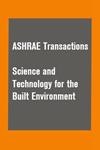相变材料嵌入膨胀粘土骨料中开发储能混凝土:综述
IF 1.7
4区 工程技术
Q3 CONSTRUCTION & BUILDING TECHNOLOGY
Science and Technology for the Built Environment
Pub Date : 2023-08-29
DOI:10.1080/23744731.2023.2253089
引用次数: 0
摘要
本文章由计算机程序翻译,如有差异,请以英文原文为准。
Phase change materials embedded in expanded clay aggregates to develop energy storage concrete: a review
Thermal energy storage (TES) based on phase change materials (PCM) is an effective strategy to reduce energy consumption in buildings. The efficient implementation of TES in building through PCMs, requires modification of their thermal performance, appropriate design and evaluation of their thermal and economic efficiency. One major challenge in the application of PCMs is the selection of high-performance and environmental-friendly supporting materials to overcome the most critical drawback of PCMs (solid-to-liquid transition and resulting leakage). This review focuses on expanded clay (EC) lightweight aggregate (LWA), as one of the promising supporting materials for development of form-stabilized PCM (FSPCM) in the lightweight concrete (LWC) industry. The large specific surface area and porous structure of expanded clay can maintain considerable amount of PCM. In addition, mechanical properties and compatibility with various PCMs make EC a suitable carrier. A detailed review of available researches is presented to elucidate the properties of PCMs embedded in EC for thermally efficient cement-based concrete. Various combinations of EC with the most used PCMs, thermal and mechanical properties of matrices containing PCM-EC, strategies to improve the efficiency of PCM performance, and finally the impact of PCM-EC based concretes on the thermal comfort of buildings are critically summarized.
求助全文
通过发布文献求助,成功后即可免费获取论文全文。
去求助
来源期刊

Science and Technology for the Built Environment
THERMODYNAMICSCONSTRUCTION & BUILDING TECH-CONSTRUCTION & BUILDING TECHNOLOGY
CiteScore
4.30
自引率
5.30%
发文量
78
期刊介绍:
Science and Technology for the Built Environment (formerly HVAC&R Research) is ASHRAE’s archival research publication, offering comprehensive reporting of original research in science and technology related to the stationary and mobile built environment, including indoor environmental quality, thermodynamic and energy system dynamics, materials properties, refrigerants, renewable and traditional energy systems and related processes and concepts, integrated built environmental system design approaches and tools, simulation approaches and algorithms, building enclosure assemblies, and systems for minimizing and regulating space heating and cooling modes. The journal features review articles that critically assess existing literature and point out future research directions.
 求助内容:
求助内容: 应助结果提醒方式:
应助结果提醒方式:


